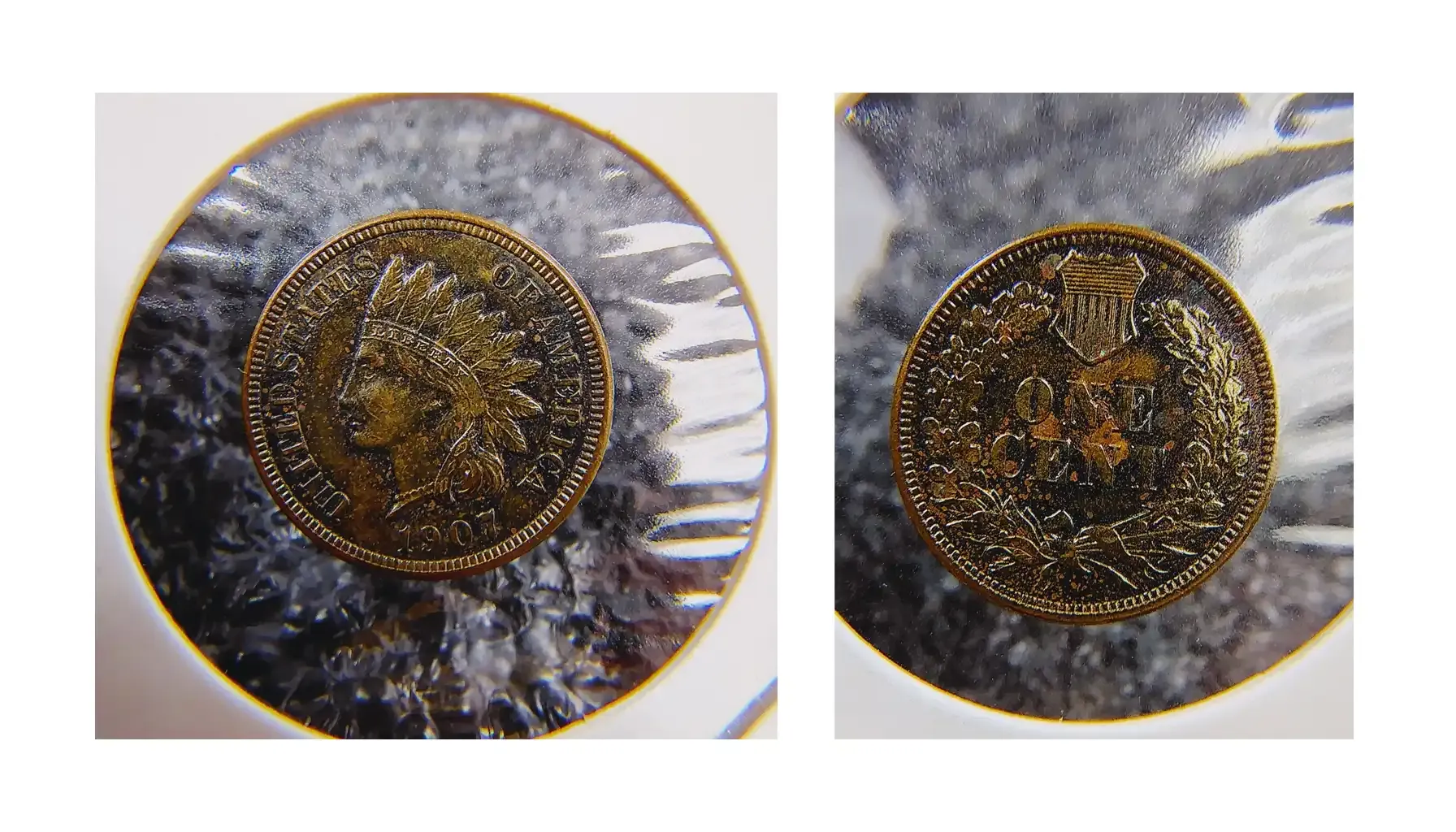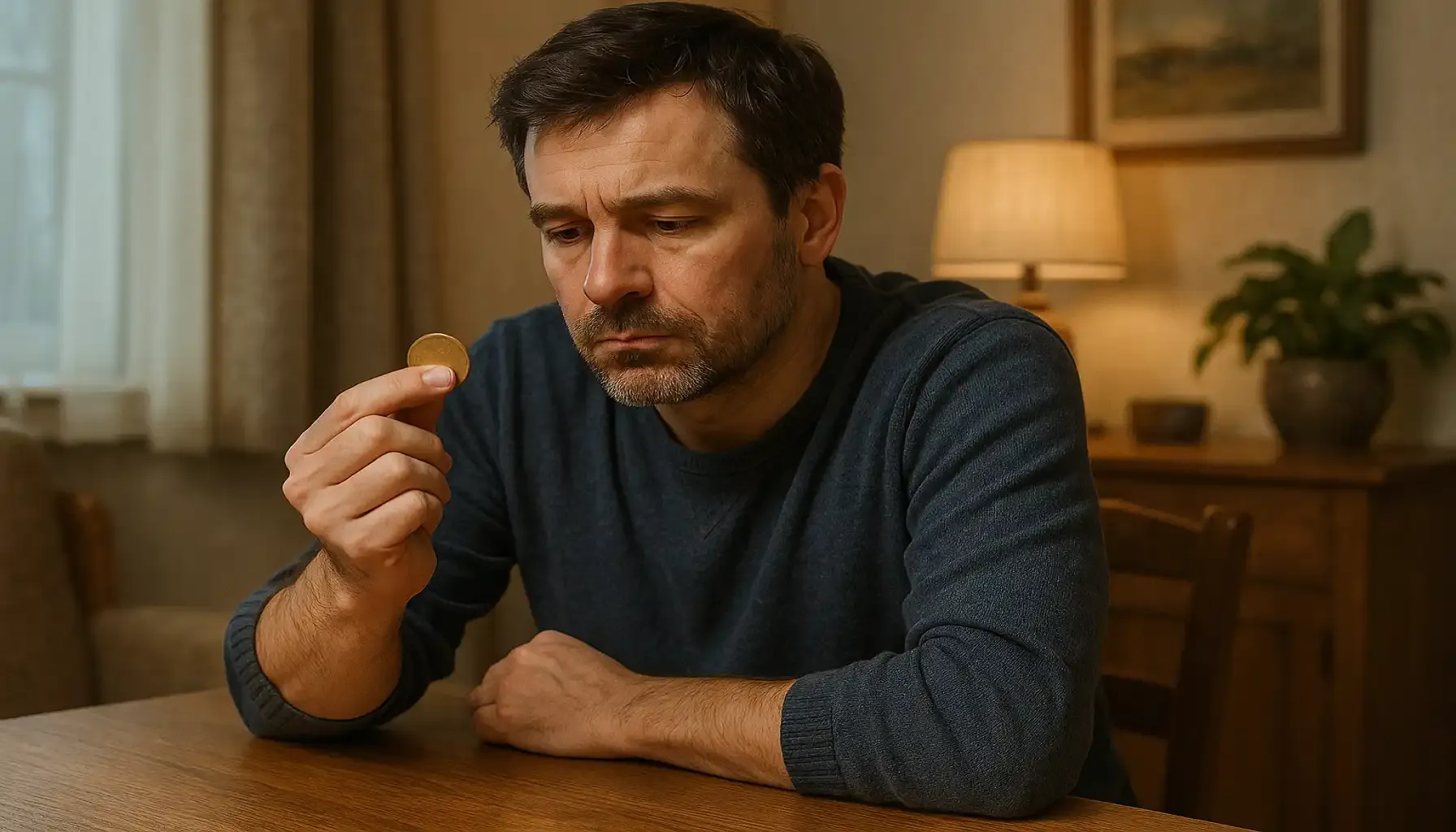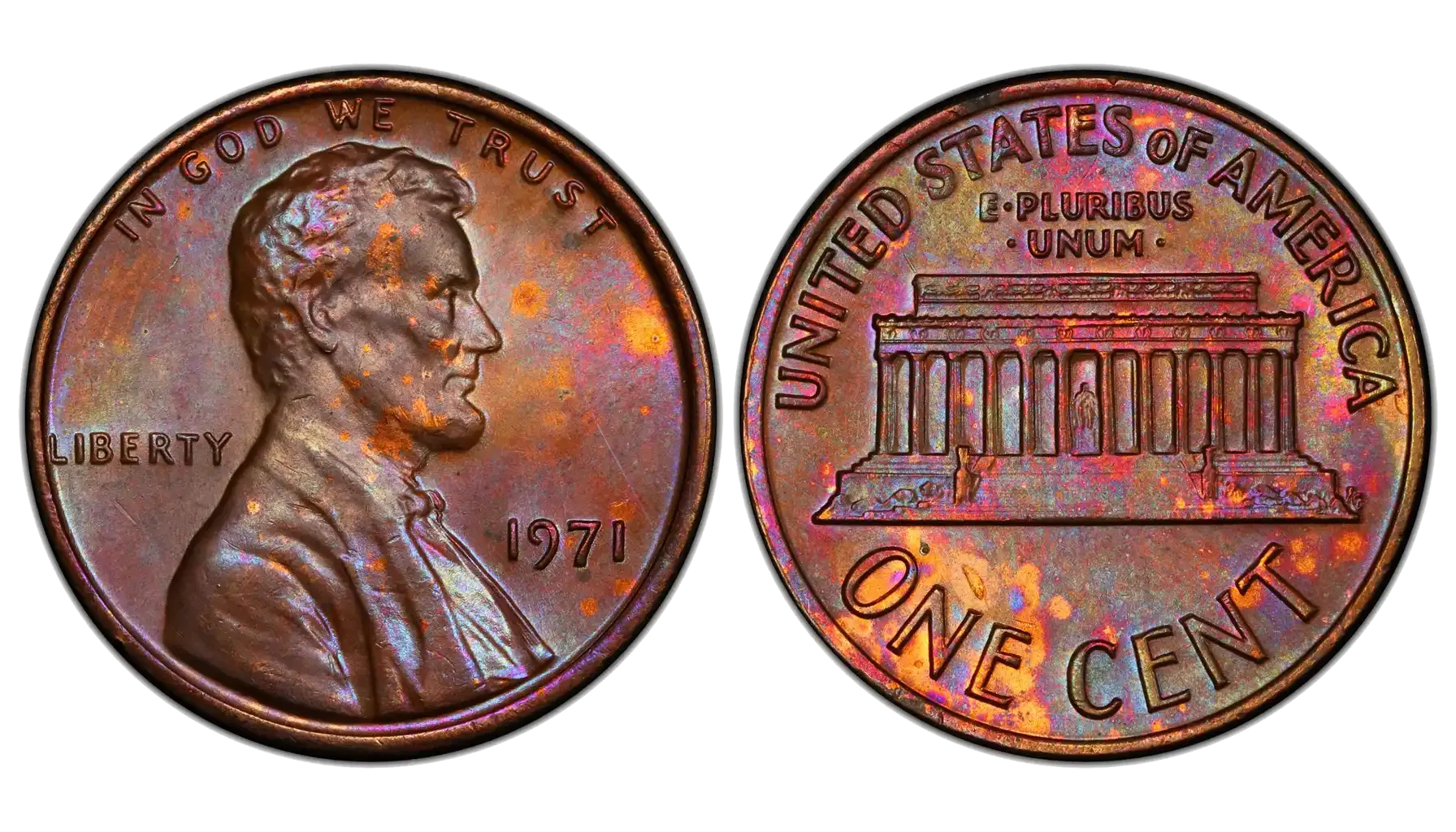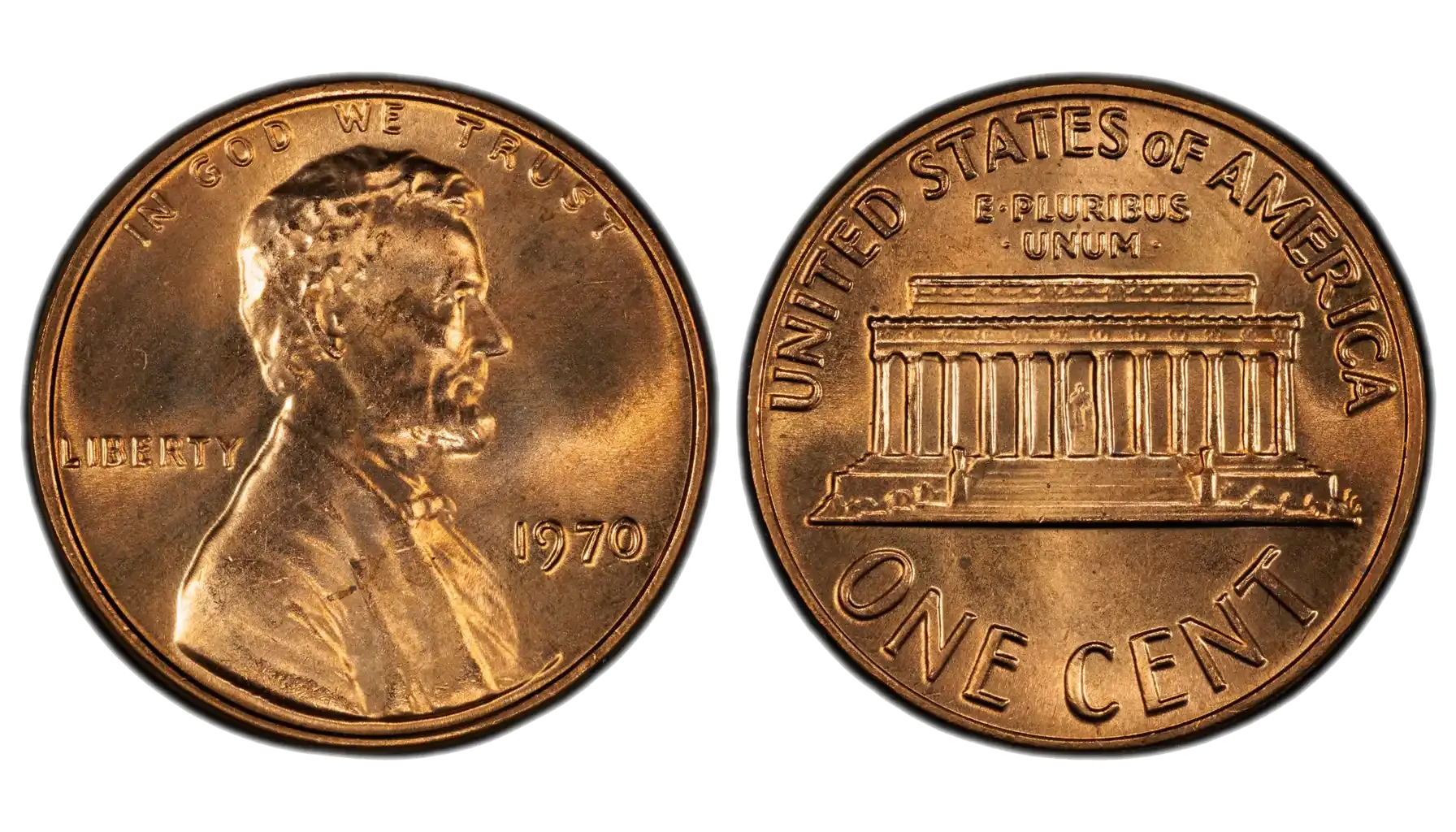Contents:
You may have inherited this coin from a grandparent, found it in a dusty attic box, or picked it up from a flea market, anyway the big question remains: how much is a 1907 Indian Head penny worth today?
Spoiler: quite a bit—if you know what to look for.
The 1907 Indian penny value can range from a few bucks to several thousand dollars, depending on its condition, rarity, and minting mistakes.
Today, we’re going to tell you more about its design history, the 1907 Indian Head penny error list, how to identify coins, and even what makes a penny like this really valuable.
Feature | Details |
Year | 1907 |
Mint Location | Philadelphia (no mint mark) |
Composition | 95% Copper, 5% Tin and Zinc |
Weight | 3.11 grams |
Diameter | 19.00 mm |
Edge | Plain |
Obverse Designer | James Barton Longacre |
Reverse Design | Oak wreath, arrows, and shield |
Mintage (Business Strike) | 108,137,143 |
Mintage (Proof) | ~1,475 |
Mint Mark Location | None (Philadelphia Mint) |
Historical Background & Design
The Indian Head penny 1907 value is rooted in a turning point for U.S. coinage. Designed by James B. Longacre, the coin shows Lady Liberty in a feathered Native American headdress.
In 1907, this penny marked a production milestone: it was the first Indian cent to surpass 100 million coins minted. But quantity doesn’t always equal commonness in the collector world. The 1907 Indian Head penny no mint mark is special from the last years before the Lincoln cent took over in 1909.
On the obverse, Liberty faces left, wearing the feathered headdress labeled "LIBERTY." The inscription UNITED STATES OF AMERICA wraps around her, with the date 1907 below.
On the reverse, the design includes an oak wreath encircling the denomination ONE CENT, topped by a union shield and anchored by a ribbon and arrows. Earlier versions had laurel wreaths, but the oak proved easier to mint—and far more enduring.
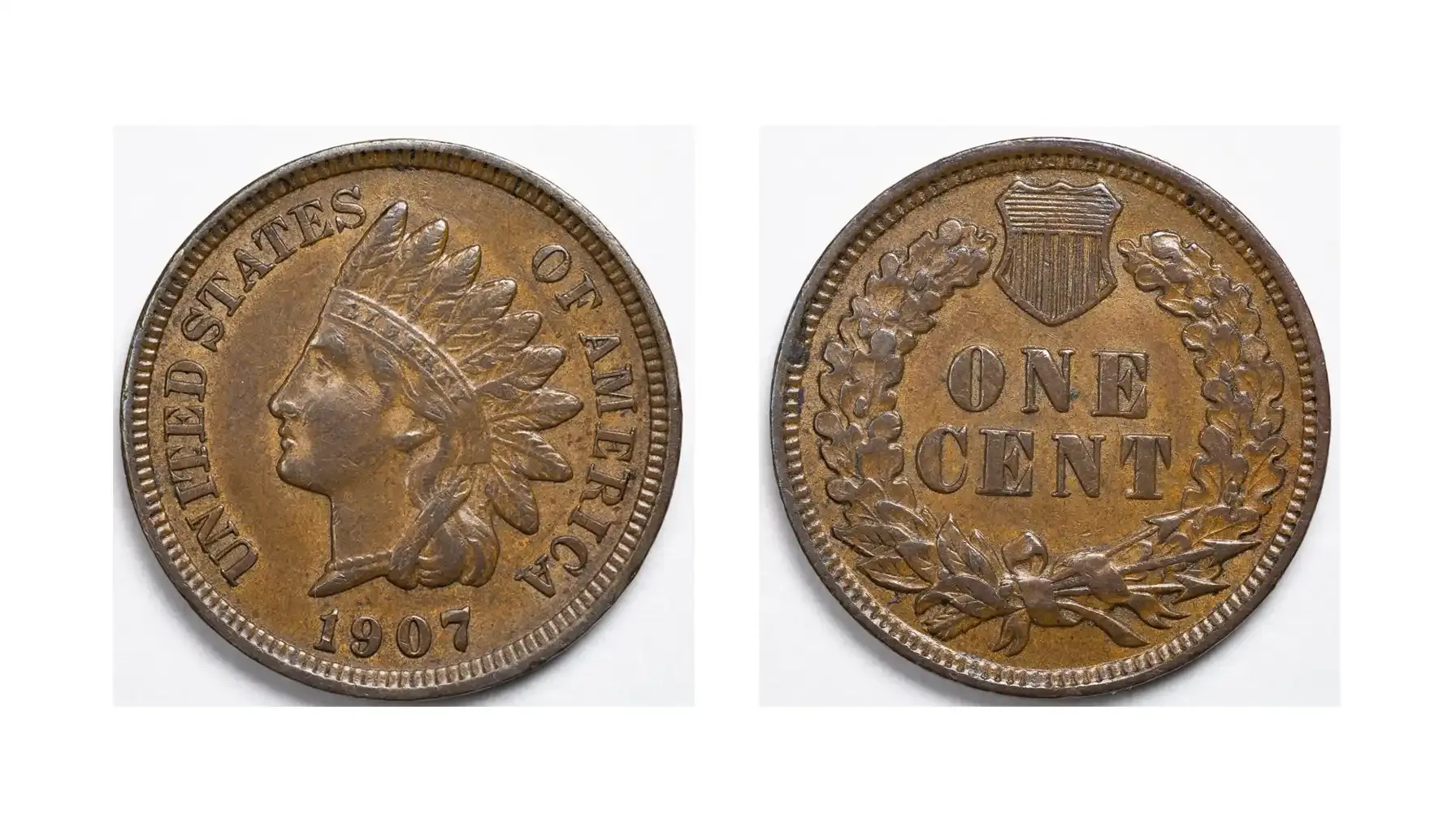
Mint Marks
The 1907 Indian Head cent is one of the most common and widely collected dates in the series. But where is the mint mark on a 1907 Indian Head penny? Here's a point:
There were no mint marks on these pieces.
All pieces were struck at the Philadelphia Mint, which did not use a mint mark at the time. So, if you have an Indian penny 1907, it was made in Philadelphia — no variants from other mints exist.
Why No Mint Marks?
In 1907:
Only the Philadelphia Mint produced Indian Head cents.
The Denver and San Francisco mints did not strike cents until the Lincoln cent series started in 1909.
Philadelphia didn’t use a “P” mint mark on any coins at the time.
1907 Penny Value Today
Is a 1907 penny worth anything?
Absolutely. The value of a 1907 Indian Head penny ranges based on condition, with no mint mark as the default due to Philadelphia being the only mint that year.
Grade | Value (Brown) | Value (Red-Brown) | Value (Red) |
Good (G-4) | $2 | – | – |
Fine (F-12) | $4 | – | – |
Extremely Fine (XF) | $15 | $22 | $50 |
About Uncirculated | $35 | $52 | $120 |
Mint State (MS60) | $52 | $95 | $175 |
MS65+ (Gem) | $400 | $700 | $2,200+ |
Proof (PF67 Red) | – | – | $23,000 |
Disclaimer: These color grades directly affect the 1907 Indian Head penny value no mint mark and are used by major grading companies like PCGS and NGC. The prices may vary due to different circumstances.
1. Brown (BN)
The coin has completely toned to a chocolate, mahogany, or dark brown color due to oxidation of copper over time. Original red luster is no longer visible.
Cause:
Natural oxidation from exposure to air, moisture, or oils.
Most older copper coins tone brown unless kept in optimal conditions.
Value Impact:
Least valuable among the three color designations for the same numerical grade.
Common in circulated coins and older mint state coins that were poorly stored.

2. Red-Brown (RB)
The coin has a mix of original red copper and brown toning. Generally, between 15% and 85% of the surface shows original red color.
Appearance:
Often beautiful with varied toning, but not fully red.
Can exhibit flashes of mint luster in protected areas.
Value Impact:
More valuable than BN, but less than full RD.
A balanced compromise for collectors who want original luster without RD price.
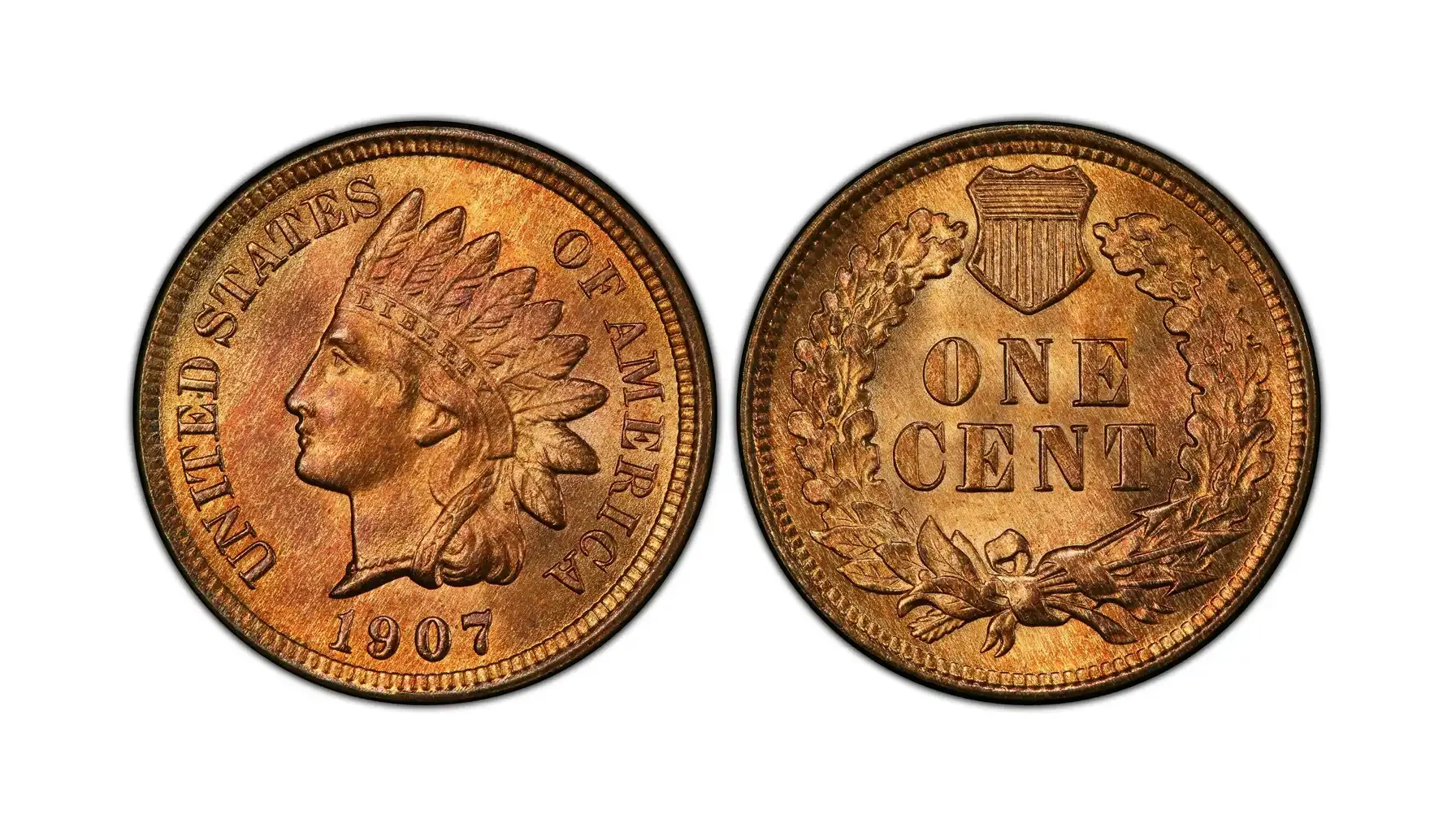
3. Red (RD)
At least 95% or more of the coin’s surface retains its original copper-red mint color. No significant toning or darkening visible.
Preservation:
Requires ideal storage conditions since copper turns brown quickly.
Best preserved in original rolls, coin albums, or slabbed early.
Value Impact:
Most valuable color designation.
Especially prized in MS-65 RD and higher, where premiums can exceed 5x the value of a BN example.
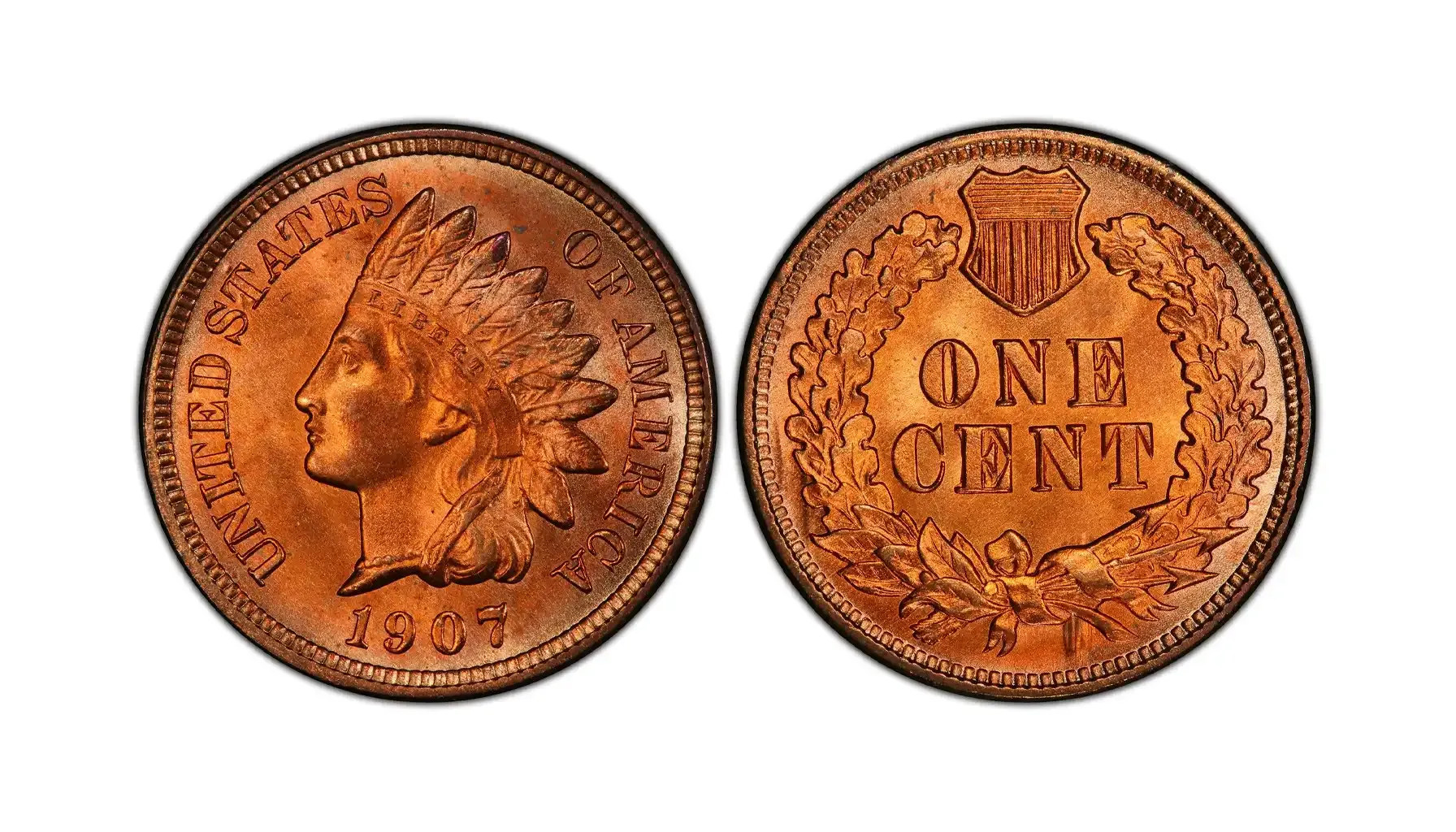
So, how much is a 1907 penny worth? In brown circulated condition, it may fetch $2–$35. Uncirculated red examples skyrocket into the hundreds or thousands.
Still asking, what is a 1907 Indian Head penny worth? If you’ve got one in brilliant condition or an error coin 1907 Indian Head penny variety, the numbers can be rather high.
Error List
1. Die Cud Error
Caused by a broken die piece, leaving a raised blob of metal—typically near the rim.
Value: $50–$150 depending on size and location.
2. Misplaced Date
The date appears slightly off from the rim alignment. Very collectible.
Value: $100–$250 for higher-grade examples.
3. Doubled Die
Slight doubling, especially in the inscription or oak leaves, gives a fuzzy, ghost-like look.
Value: $150–$300+ depending on clarity.
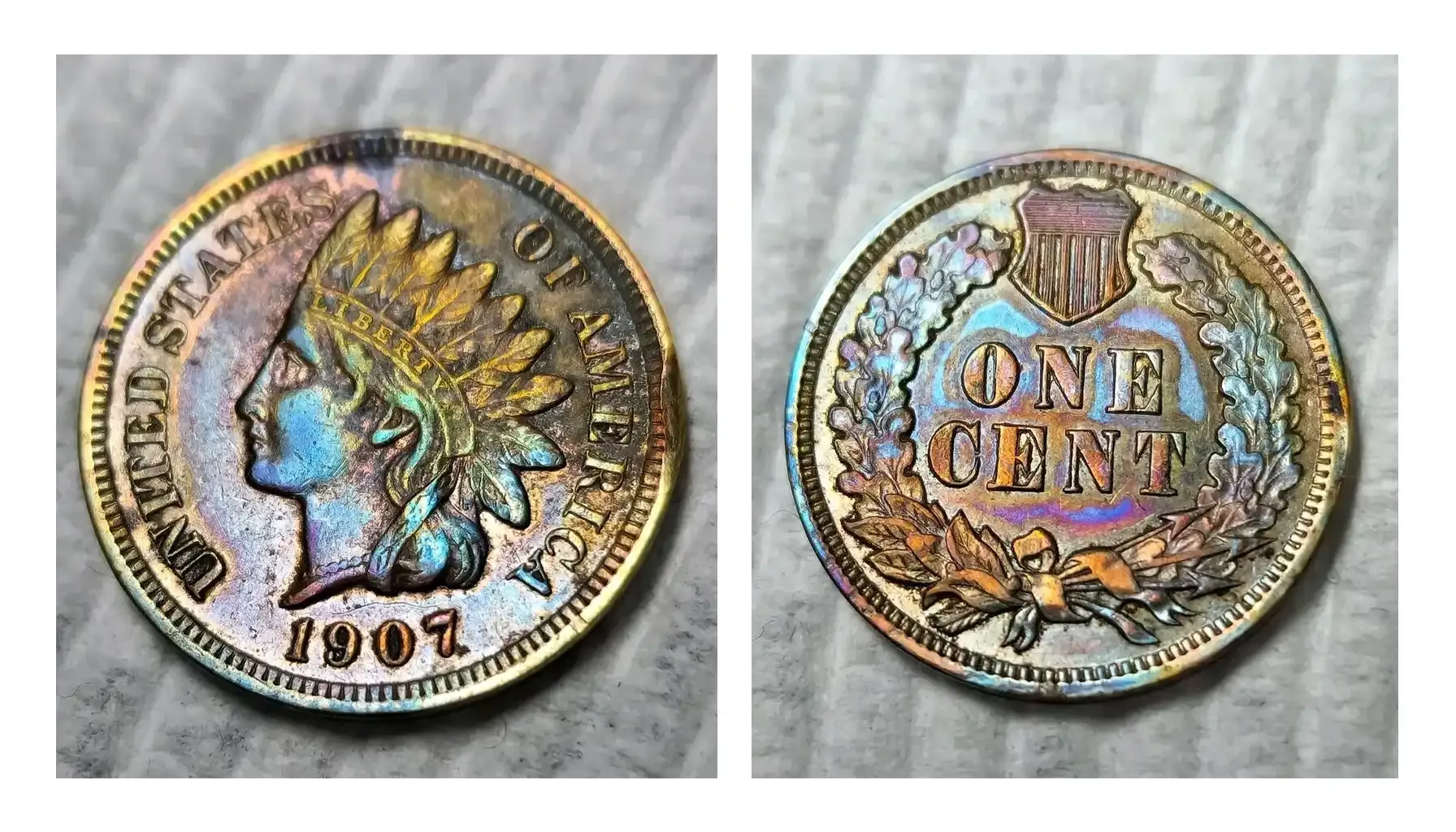
What To Do If You Have One?
So, how much is a penny from 1907 worth? Condition, color, and errors are everything.
Here’s where it gets smart: you don’t need to guess.
Coin ID Scanner — your free tool to:
Instantly identify any coin by photo
Look at market values
Build and manage your own collection portfolio
With the Coin ID Scanner app, determining 1907 penny coin value becomes a breeze—even if you’re not a seasoned numismatist.
Quick Recap – What You Now Know:
The value of 1907 Indian Head penny coins is common but vary based on grade
It is the highest-minted in its series—yet still holds value
1907 wheat penny value is a misnomer (1907 Indian Head wheat penny value as well)—there’s no wheat on these (that started in 1909)
Error coins = $$$
The Coin ID Scanner app helps you find out how much is a 1907 penny Indian Head worth—fast.
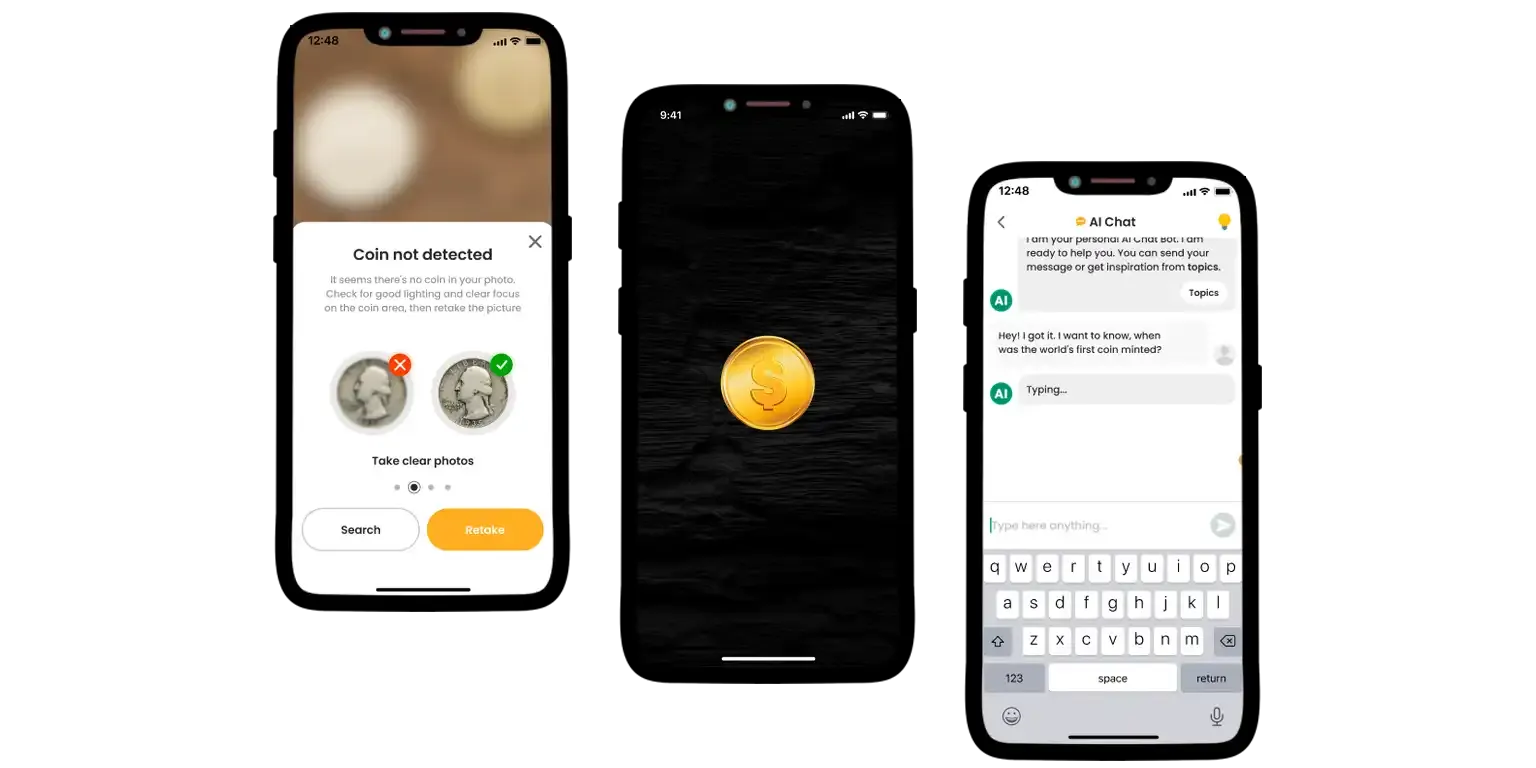
FAQs
Did the 1907 Indian Head penny experience any transitional design or metal composition changes?
No transitional changes occurred in 1907, but the coin sits at a critical turning point in U.S. numismatic history. It was the last full year before the transition to the Lincoln cent (1909), and also one of the final years before major stylistic shifts in U.S. coinage under President Theodore Roosevelt’s artistic renaissance. The 1907 issue represents the end of the classical era of U.S. copper coin design.
What is the historical significance of the coin’s imagery in 1907’s sociopolitical context?
The Indian Head design—featuring Liberty in a feathered headdress—was already anachronistic by 1907. Native American culture was marginalized by this time, and the imagery reflected more of a romanticized myth than reality. The design persisted partly due to tradition but was becoming culturally outdated. Its continued use until 1909 shows how U.S. coinage lagged behind societal shifts in representation.
Are proof versions rare?
Yes. The U.S. Mint struck Proof 1907 Indian Head cents in Philadelphia using polished dies and specially prepared planchets. Only 1,475 proofs were made. These coins are rare and desirable, especially with original red color (PR-65 RD can reach $3,000–$5,000+ at auction). Be cautious: proof and business strikes can look similar at first glance; mirror surfaces and square rims are the keys to ID.
How can I tell if a 1907 Indian Head penny was used in jewelry or damaged?
Many Indian Head cents, including 1907s, were drilled, holed, bent, or soldered into jewelry, particularly during the Victorian and early 20th-century eras. Common signs include: Unnatural discoloration Visible solder or mounting marks Thin rims from polishing
What is the market trend for 1907 Indian Head pennies in the last 20 years?
The market for high-grade cents, especially in MS-65 RD and proof, has been steadily appreciating, particularly since 2008. As investors diversify into tangible assets like coins, 1907s in superb condition—while not rare—have benefited from demand for registry sets, driving prices higher. Lower-grade pieces remain stable due to high supply.
Can cleaning destroy its value?
Absolutely. Cleaning copper coins irreversibly damages their surfaces, often leaving hairline scratches or unnatural shine that grading services detect instantly. Even gentle "improvements" lower value. A raw, dirty AU coin is far more valuable than a harshly cleaned AU that appears XF or AU+.
Are 1907 Indian Head pennies common in international finds (e.g., metal detecting in Europe)?
Surprisingly, yes. Due to the global circulation of U.S. copper coins in the early 20th century, some 1907 cents are found in Europe, Latin America, and even Southeast Asia. These often show heavy corrosion or environmental damage but are historically fascinating. Some may have been carried by soldiers, missionaries, or merchants abroad.
Can I find doubled die errors on these coins?
Yes, though rare. Certain 1907 cents exhibit subtle doubled die obverses, often visible in the date or lettering (e.g., “LIBERTY” or “UNITED STATES”). These are not as dramatic as modern doubled dies (like 1955 Lincoln cents), but they command significant premiums. A confirmed DDO in high grade can bring $100–$500+, or more if certified. Use magnification or error-detection tools to inspect closely.

